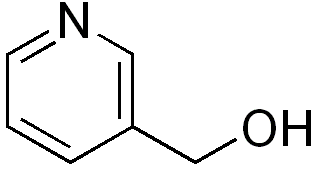
Vasodilation is the widening of blood vessels. It results from relaxation of smooth muscle cells within the vessel walls, in particular in the large veins, large arteries, and smaller arterioles. The process is the opposite of vasoconstriction, which is the narrowing of blood vessels.

Papaverine is an opium alkaloid antispasmodic drug, used primarily in the treatment of visceral spasms and vasospasms, occasionally in the treatment of erectile dysfunction and acute mesenteric ischemia. While it is found in the opium poppy, papaverine differs in both structure and pharmacological action from the analgesic morphine and its derivatives.
Triacsin C is an inhibitor of long fatty acyl CoA synthetase that has been isolated from Streptomyces aureofaciens. It blocks β-cell apoptosis, induced by fatty acids (lipoapoptosis) in a rat model of obesity. In addition, it blocks the de novo synthesis of triglycerides, diglycerides, and cholesterol esters, thus interfering with lipid metabolism.

Amrinone, also known as inamrinone, and sold as Inocor, is a pyridine phosphodiesterase 3 inhibitor. It is a drug that may improve the prognosis in patients with congestive heart failure. Amrinone has been shown to increase the contractions initiated in the heart by high-gain calcium induced calcium release (CICR). The positive inotropic effect of amrinone is mediated by the selective enhancement of high-gain CICR, which contributes to the contraction of myocytes by phosphorylation through cAMP dependent protein kinase A (PKA) and Ca2+ calmodulin kinase pathways.

Adrenomedullin is a vasodilator peptide hormone of uncertain significance in human health and disease. It was initially isolated in 1993 from a pheochromocytoma, a tumor of the adrenal medulla: hence the name.

Isoxsuprine is a drug used as a vasodilator in humans and equines. Isoxsuprine is a β2 adrenoreceptor agonist that causes direct relaxation of uterine and vascular smooth muscle via β2 receptors.

Nicotinyl alcohol (pyridylcarbinol) is a niacin derivative used as a hypolipidemic agent and as a vasodilator. It causes flushing and may decrease blood pressure.

Profilin-1 is a protein that in humans is encoded by the PFN1 gene.

Vasodilator-stimulated phosphoprotein is a protein that in humans is encoded by the VASP gene.

Zyxin is a protein that in humans is encoded by the ZYX gene.

Profilin-2 is a protein that in humans is encoded by the PFN2 gene.

Trapidil is a vasodilator and an antiplatelet drug. It also acts as an antagonist of platelet-derived growth factor.

Denopamine (INN) is a cardiotonic drug which acts as a β1 adrenergic receptor agonist. It is used in the treatment of angina and may also have potential uses in the treatment of congestive heart failure and for clearing pulmonary oedema. It is marketed in Japan under the brand name Kalgut (カルグート) and available as tablets of 5 and 10 mg, and 5% fine granules.

Buphenine is a β2 adrenoreceptor agonist that acts as a vasodilator.
Fasudil (INN) is a potent Rho-kinase inhibitor and vasodilator. Since it was discovered, it has been used for the treatment of cerebral vasospasm, which is often due to subarachnoid hemorrhage, as well as to improve the cognitive decline seen in stroke patients. It has been found to be effective for the treatment of pulmonary hypertension. It has been demonstrated that fasudil could improve memory in normal mice, identifying the drug as a possible treatment for age-related or neurodegenerative memory loss.
A potassium channel opener is a type of drug which facilitates ion transmission through potassium channels.
Suloctidil was a sulfur-containing aminoalcohol that was brought to market in the early 1970s as a vasodilator by Continental Pharma, a Belgian company.

Diprophylline (INN) or dyphylline (USAN), is a xanthine derivative with bronchodilator and vasodilator effects. It is used in the treatment of respiratory disorders like asthma, cardiac dyspnea, and bronchitis. It acts as an adenosine receptor antagonist and phosphodiesterase inhibitor.

Fostedil is a vasodilator acting as a calcium channel blocker which was under development for the treatment of heart conditions such as angina pectoris but was never marketed. It has antihypertensive and antiarrhythmic effects.

Bupicomide is a chemical compound created and manufactured by Lanospharma Laboratories Company, Ltd. It is used experimentally as a beta blocker and clinically as a strong vasodilator with the noted side effects of reduced systolic, diastolic and mean arterial pressure.
















